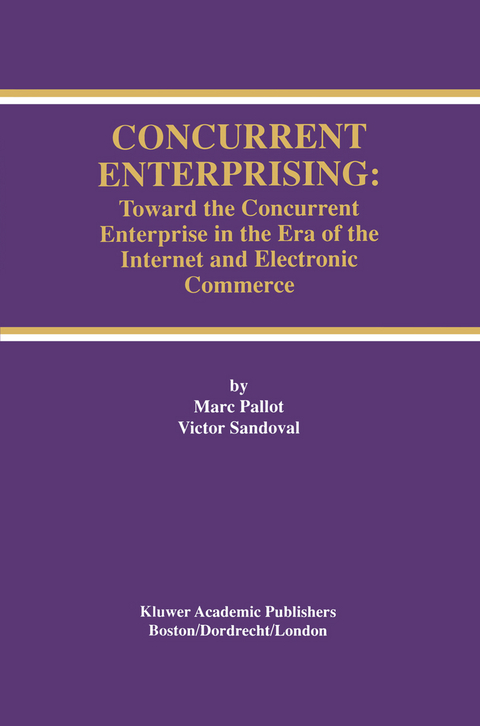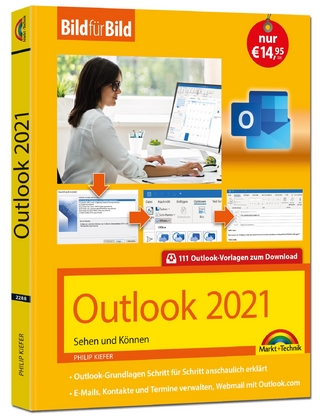
Concurrent Enterprising
Springer-Verlag New York Inc.
978-1-4613-6823-6 (ISBN)
The book has eight chapters. The first two concentrate on the advanced enterprise paradigms, and their advantages and limits for maintaining or improving competitiveness in the global marketplace. Chapter 3 studies, separately, the virtual enterprise and related approaches. Chapter 4 studies another fundamental ingredient of the new business model - concurrent engineering (CE). Chapter 5 summarizes these preceding approaches and establishes a foundation for building a concurrent enterprise. Chapter 6 presents specific business cases illustrating the advantages and limits of virtual enterprise applications and introduces electroniccommerce and electronic documents. Chapter 7 presents concurrent enterprise as a new business model, and Chapter 8 synthesizes the concurrent enterprising process.
Concurrent Enterprising: Toward the Concurrent Enterprise in the Era of the Internet and Electronic Commerce is a reference and a user's guide designed for business managers, IT managers, engineers, researchers, scientists, and other individuals interested in learning how to use a sustainable business model driven by the Internet and electronic commerce.
1 New Business Trends.- 1.1. Introduction.- 1.2. The global market approach.- 1.3. New productive paradigms.- 1.4. From the information to knowledge age.- 1.5. The knowledge factor and the global infrastructure.- 1.6. Business strategies.- 2 Existing Approaches.- 2.1. Introduction.- 2.2. The shared enterprise.- 2.3. The intelligent enterprise (IE).- 2.4. Agile manifacturing (AM).- 2.5. Computer Integrated manufacturing (CIM).- 2.6. Intelligent manufacturing systems (IMS).- 2.7. The CIM-OSA Model.- 3 Virtual Enterprise(VE) and Related Approaches.- 3.1. Introduction.- 3.2. Toward a concept of VE.- 3.3. Tha characteristics, functions and bases of VE.- 3.4. An illlustration of the VE concept.- 3.5. Related cases.- 4 Concurrent Engineering (CE).- 4.1. Introduction.- 4.2. Definition and motivations.- 4.3. CE implementation needs.- 4.4. The integrated working environment and product information.- 4.5. Available methods, information technology (IT) and Tools.- 4.6. CE related projects.- 4.7. Conclusion.- 5 Assessment of The Enterprise Approaches.- 5.1 Introduction.- 5.2. Enterprise approaches: a general view.- 5.3 Why and how approaches must be used in concurrent Enterprise.- 5.4. Weaknesses and cooperation assessment.- 6 Business Cases and Electronic Commerce.- 6.1 Introduction.- 6.2. Business cases.- 6.3. Electronic commerce (EC).- 6.4. Networking documents.- 7 Concurrent Enterprise.- 7.1. Introduction.- 7.2 Cooperation, collaboration and concurrency.- 7.3. Concurrent enterprise and electronic commerce.- 7.4. From traditional projects in partnership to concurrent enterprise.- 7.5. Virtual enterprise and concurrent enterprise.- 7.6. Concurrent enterprise as a tactical approach.- 7.7 Virtual prototyping.- 7.8. Conclusion.- 8 Concurrent Enterprising.- 8.1. Introduction.- 8.2. Concurrency reference model.- 8.3. Concurrency and collaboration capability assessment.- 8.4. Assessment considerations and approaches.- 8.5. Capability assessment.- 8.6. Virtual Shared Spaces.- 8.7. Conclusions.- Conclusions.
| Erscheint lt. Verlag | 3.10.2012 |
|---|---|
| Reihe/Serie | The Springer International Series in Engineering and Computer Science ; 449 |
| Zusatzinfo | XI, 197 p. |
| Verlagsort | New York, NY |
| Sprache | englisch |
| Maße | 155 x 235 mm |
| Themenwelt | Mathematik / Informatik ► Informatik ► Netzwerke |
| Informatik ► Office Programme ► Outlook | |
| Mathematik / Informatik ► Informatik ► Web / Internet | |
| Mathematik / Informatik ► Mathematik ► Finanz- / Wirtschaftsmathematik | |
| Wirtschaft ► Allgemeines / Lexika | |
| Wirtschaft ► Betriebswirtschaft / Management ► Logistik / Produktion | |
| Wirtschaft ► Betriebswirtschaft / Management ► Unternehmensführung / Management | |
| Wirtschaft ► Volkswirtschaftslehre ► Makroökonomie | |
| ISBN-10 | 1-4613-6823-5 / 1461368235 |
| ISBN-13 | 978-1-4613-6823-6 / 9781461368236 |
| Zustand | Neuware |
| Haben Sie eine Frage zum Produkt? |
aus dem Bereich


